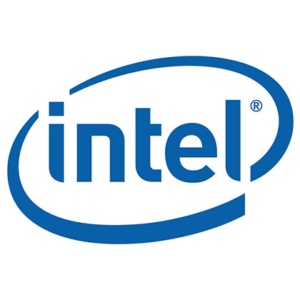Intel CEO Lip-Bu Tan Faces Internal Rift, Political Pressure, and Strategic Crossroads
Intel’s new CEO, Lip-Bu Tan, has been in the job for just a few months, but already finds himself at the center of a high-stakes battle — one that spans boardroom disputes, political interference, and strategic questions that could reshape the semiconductor industry. For traders, this drama isn’t just a corporate soap opera. It has real implications for chip sector valuations, U.S.–China tech tensions, and the broader market’s appetite for semiconductor risk.
The Boardroom Showdown
From the moment Tan took the reins in March — a move that initially sent Intel’s shares up over 13% — it was clear he had big plans. A turnaround veteran who previously led Cadence Design Systems, Tan entered with a vision to reinvest in Intel’s manufacturing capacity, pursue AI acquisitions, and shore up the company’s lagging competitive position against Nvidia and AMD.
But Intel’s board, led by Chairman Frank Yeary, has not been entirely on board. The two sides reportedly clashed almost immediately over whether Intel should remain in the chip manufacturing business — a segment that last year supplied about a third of Intel’s revenue but has been a persistent money-loser. Yeary had explored spinning off the foundry division entirely, potentially bringing in strategic investors like Nvidia or Amazon, or even selling to Taiwan’s TSMC.
Tan, by contrast, views domestic manufacturing as a cornerstone of Intel’s future and a strategic necessity for U.S. national security, particularly in an era where Washington is laser-focused on reducing reliance on foreign suppliers.
Deals Delayed and Opportunities Lost
- Capital Raise Stalled – Tan wanted to move quickly on a multibillion-dollar capital raise to strengthen Intel’s balance sheet and accelerate investment in fabrication plants. The board slowed the process, possibly delaying it until 2026.
- AI Acquisition Slips Away – Intel had targeted an AI company to close the gap with Nvidia and AMD in machine learning and data center hardware. But the board’s slow deliberation left the door open for a rival bidder.
- Partnerships That Fizzled – Recent strategic partnerships have fallen apart, adding to the sense that Intel is losing time in a fast-moving market.
The company has responded by cutting costs — including a 15% workforce reduction — and slowing construction on new U.S. and European plants. As Tan told staff, “Every investment must make economic sense.”
Political Storm Clouds
The corporate power struggle took a dramatic turn when former President Donald Trump publicly called for Tan’s resignation, citing “conflicts” tied to his past business relationships with Chinese firms. This follows the Justice Department’s $140 million settlement with Cadence Design — the company Tan ran until 2021 — over sales to a Chinese military university.
Political pressure intensified when U.S. senators from both parties — including Republican Tom Cotton and Democrat-turned-Republican Bernie Moreno — questioned Tan’s suitability for the role. Trump’s intervention also comes as his administration is reshaping semiconductor policy, leaning more heavily on tariffs and revisiting CHIPS Act agreements.
This political overlay adds an extra layer of uncertainty for traders: even if Tan survives the boardroom fight, he may have to navigate a hostile policy environment that could shape Intel’s capital access, government contracts, and customer relationships.
What It All Means for Traders
- Short-Term Volatility – Any news on Tan’s status, whether it’s his resignation, board restructuring, or new political attacks, could trigger sharp moves in INTC shares.
- Sector Spillover – Intel’s strategic decisions affect not only its own stock but also competitors like AMD, Nvidia, and TSMC.
- U.S.–China Trade Sensitivity – Tan’s ties to Chinese firms, coupled with Trump’s aggressive tariff agenda, put Intel squarely in the crosshairs of geopolitical risk.
- AI Race Implications – Delays in AI-related acquisitions and R&D could widen the gap between Intel and its AI-heavy rivals.
- Policy-Driven Plays – With Washington rethinking the CHIPS Act, politically aligned companies may enjoy a valuation premium.
The Bigger Picture
Intel’s fate under Tan is a microcosm of the modern tech-industrial landscape: a once-dominant player struggling to adapt, an internal tug-of-war between financial pragmatism and strategic sovereignty, and political actors willing to shape corporate leadership for national security aims.
For traders, the lesson is clear: INTC is not just a semiconductor stock anymore — it’s a geopolitical asset, a restructuring story, and a volatility generator all in one.
Trader’s Risk/Reward Playbook
| Scenario | Market Impact | Potential Trade | Risk Factors |
|---|---|---|---|
| Tan Stays & Gains Board Support | Relief rally in INTC; sentiment improves on perceived stability and clarity of manufacturing strategy. | Long INTC on breakout above resistance; look for follow-through in semiconductor ETFs (SMH, SOXX). | Political attacks could still weigh; execution risk on delayed deals. |
| Tan Resigns | Initial sell-off on uncertainty, potential rebound if replacement seen as market-friendly. | Fade initial panic for swing trade; watch for leadership signals from new CEO pick. | Volatility could spike; risk of further strategic drift. |
| Intel Exits Manufacturing | Short-term pop on cost-cutting narrative; long-term risk to U.S. supply chain positioning. | Short-term long on momentum; hedge with puts if narrative turns national security-focused. | Backlash from policymakers; risk of losing strategic customers. |
| Major AI Acquisition Secured | Strong bullish sentiment; narrows competitive gap with Nvidia/AMD. | Long INTC; pair trade long INTC/short weaker AI laggards. | Integration and execution risk; overpayment concerns. |
| Escalating U.S.–China Tensions | Broad semiconductor sector volatility; INTC under pressure due to scrutiny of Tan’s ties. | Hedge with inverse semiconductor ETFs; short INTC on tariff headlines. | Fast-moving headlines; risk of policy reversal. |
In short, Intel is now a headline-driven trading instrument. For active traders, the key is agility — be ready to pivot positions as the political, strategic, and boardroom narratives evolve.

